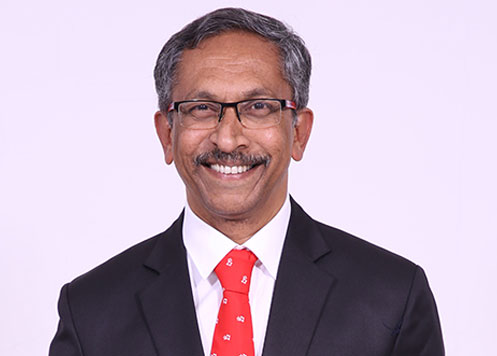#Eachforequal – India needs more women in the manufacturing industry

This year, I found myself reflecting on the theme #Eachforequal. The focus has been on creating an equal world, one in which every being is enabled, irrespective of gender. A world in which we actively choose to challenge stereotypes, fight bias, broaden perceptions and improve situations. A world in which women’s achievements are celebrated and act as an inspiration for other women, by the very virtue of that celebration.
Having spent a significant part of my career in the manufacturing industry, I’ve observed that women barely make up 10% of the workforce. While that number has grown to a relatively more encouraging 30% today, this is indicative of the gender disparity that is very much present, across the world. A study on the Indian women in the manufacturing sector reveals that women represent only about 3% in core engineering industry, as opposed to 12% in the electronics industry. And this is when we face a global skillset gap.
Manual labour, long working hours and a not so friendly shop-floor often create a stereotypical impression that causes low numbers of women joining the manufacturing workforce. Women represent one of the largest pools of untapped talent for manufacturers, and closing manufacturing’s gender gap is key to businesses’ ability to evolve and expand. Bridging the divide that exists today will mean reshaping the way people think about manufacturing careers, educating them about the different kinds of jobs available and helping them acquire the qualifications necessary to do justice to these roles. The first thing to do is to learn about the policies and practices in place, those that truly contribute to building a global and diverse workforce. While the manufacturing industry has come a long way and has evolved in its practices, I think we have some work to do in educating potential employees about the progressive policies and processes practised in the manufacturing industry.
The next thing to do is to position manufacturing as a great career option for women employees. I would argue that the manufacturing sector is equal or better than the service organizations, specifically considering the focus the industry has on SHE (Safety, Health and Environment). Today, manufacturing is a progressive industry focused on global markets and offers immense, diverse opportunities to every employee, including women leaders. Well systems and processes offer flexibility to accommodate diverse workforce. We are an industry where you see the value addition right in front of your eyes and this is more tangible than services and offers immense satisfaction. Put simply, the manufacturing industry is in a state of reinvention, and exciting, educating and empowering women will be critical to the future of the industry.
Many organizations have adopted and developed inclusive workplaces and created an environment that is supportive for women. Extending parental leave, providing creative ways to build work-life balance are few ways the organizations have been working on. Companies across the world have focused on building encouraging flexible working policies. Looking back, we rolled out a structured flexible location policy as early as 2008, becoming one of the very few manufacturing companies to have done so. Training is a critical component when it comes to building sustainable communities (not just women) for the future. For example, our vocational training school conducts a three-year programme post which the graduates join us in our manufacturing facilities. Today, the fresh batch of this programme has over 50% women in the class. We’re excited about being able to build diversity right at the very start of the talent pipeline.
I would consider a five-day working week as a very strong enabler – one that attracts a diverse workforce.
There is enough and more data available in the public domain today about the benefits of gender diversity. These data points indicate the positive impact gender diversity has on various tangible and intangible business metrics. In my opinion, gender diversity and diversity of various types is a necessary condition for a unit to thrive. This is very clearly seen in a family unit and we are on a continuous journey to re-create the same in our organizational context. One of the simple ways we could measure this is by identifying diversity of various types in a business meeting. We bring diversity in cross-functional teams that work on critical initiatives in the company. A diverse workforce can bring unique experiences and new-age capabilities to the table, such as collaboration, communication, innovation, and creative thinking. Their mind-set can enable a better understanding of the mind-sets (and requirements) of the customer base, a large part of which is also diverse. We are more conscious and cognizant of the importance of such diversity in various programmes and decision-making processes in our organization. We are still a few steps away from building quantitative measures for its impact on business performance. To sum up, we need to bridge skillset gaps while we reshape the way women think about jobs in the manufacturing space. #Eachforequal holds more meaning now, than ever before.
The author, Jayakanthan R, is Director - People, Systems and Strategy at Elgi Equipment.
VIEW ARTICLE
